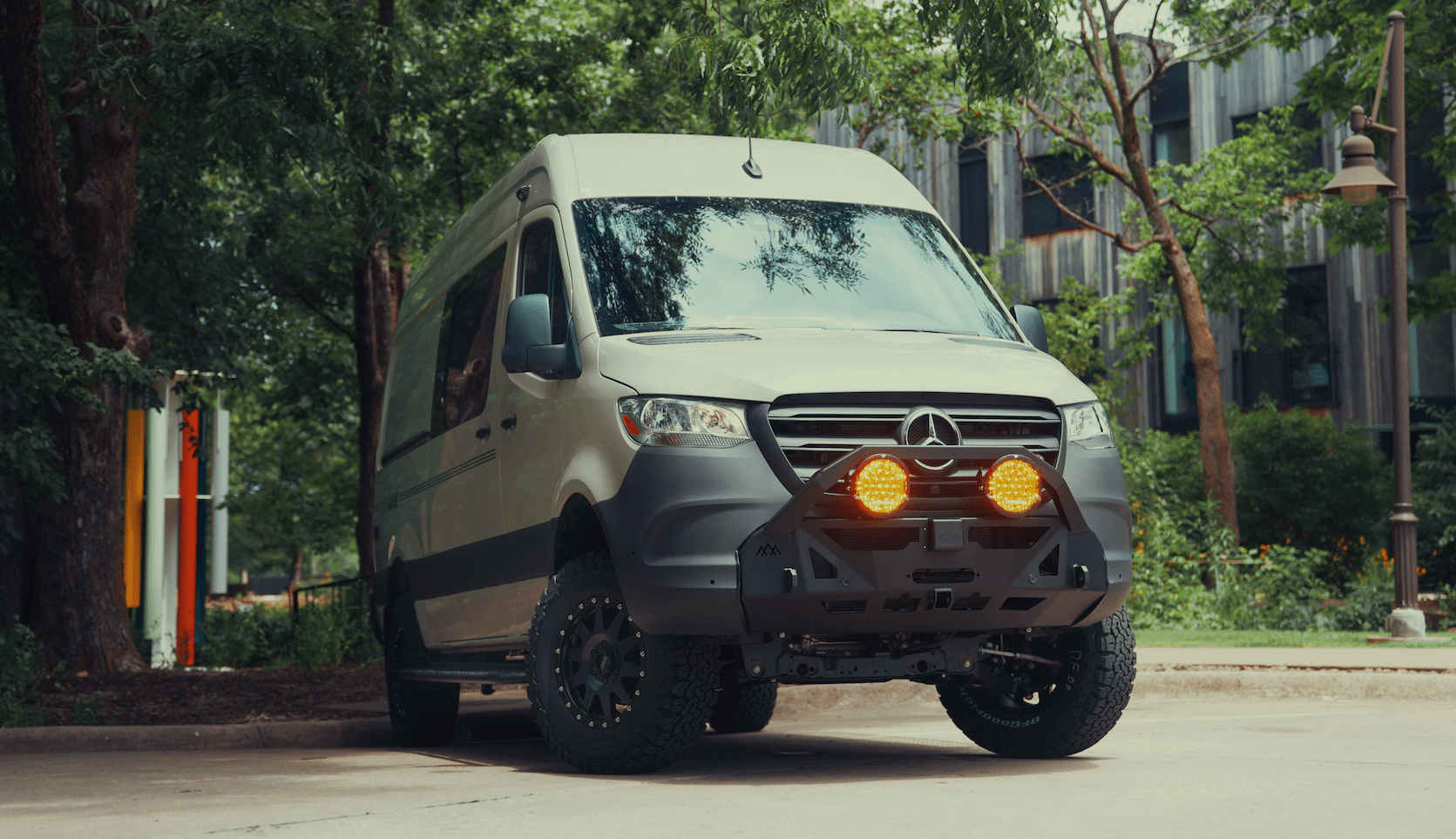Recreational Vans

Rainwater harvesting on a moving platform borrows ideas from stationary cisterns, then adapts them for vibration, limited roof space, and changing weather. A rainwater collection system for a van typically begins with the roof as the catchment surface. Water is guided toward a gutter or channel, screened to remove leaves and grit, then sent through a first flush device that diverts the initial dirty runoff. From there, flow enters storage, where treatment protects water quality for cooking, rinsing, and showers.
A smooth, clean roof sheds water efficiently. Low profile channels or gutter rails can guide flow to a collection point without whistling or drag. A mesh screen prevents debris, while a first flush diverter discards the early portion of a storm that washes dust and pollen off the roof. Keep rooftop accessories in mind since racks, fans, and solar panels shape runoff paths and reduce available area.
Food grade polyethylene tanks are common for vans since they resist impact and are easy to sanitize. Placement matters. Interior tanks stay warmer in winter and simpler to service. Underslung tanks free interior space but need skid protection, venting, and robust mounts. Use potable rated tubing, check valves to prevent backflow, and a vent that will not admit road splash. A 12 volt pump and a pressure accumulator smooth flow at the faucet and shower.
A practical sequence is sediment filtration followed by carbon adsorption, then final disinfection. A coarse sediment element reduces grit. A carbon block improves taste and odor by reducing chlorine alternatives and organics. For drinking, a UV unit or an approved chemical disinfectant provides the final safeguard. Remember that filtration does not replace sanitation of tanks and lines. Treat the system as a chain, where every link must be clean.
Vans move, vibrate, and encounter freeze cycles. A successful rainwater collection system for a van manages weight, mounting strength, temperature swings, and service access. It also respects roof real estate already reserved for solar, vents, and cargo.
Water is heavy. One gallon weighs a little over eight pounds, so even a modest tank can influence handling. Place mass low and centered when possible. Use metal brackets or frame bonded mounts for underslung tanks, and secure plumbing with cushions to prevent chafe. Every attachment point must tolerate potholes, washboard, and quick stops without fatigue.
Cold weather can disable a system that lacks freeze mitigation. Interior tanks paired with insulated lines extend the usable season. For exterior plumbing, heat trace and insulation can protect short runs. In hot climates, opaque tanks reduce light exposure, which helps control microbial growth. Venting and periodic turnover keep stored water fresher in every season.
Choose food grade tanks, NSF rated tubing, and stainless or polymer fittings designed for potable contact. Avoid reactive metals in prolonged contact with water. Keep a dedicated fill port to prevent cross contamination. If you plan to drink harvested rain, include final stage treatment and a testing routine so you can verify performance over time.
Rain is intermittent, so strategy matters. A roof might yield several gallons during a passing shower, then nothing for days. Build habits around forecast awareness, storage headroom, and system hygiene.
You will gather the most during steady rain with the van parked level or slightly pitched toward the collection point. Avoid collecting immediately after roof washing, waxing, or dusty trail days until the first flush clears contaminants. While driving, wind can scatter runoff and reduce capture, so plan around stationary collection when possible.
Rinse screens and the first flush housing after use. Sanitize tanks and lines on a regular schedule using a potable safe procedure, then flush thoroughly. Replace filter elements according to gallons and time, since growth potential increases once carbon is exhausted. Inspect mounts, vents, and hose clamps after rough travel days.
Match your storage to your consumption. Showers, dish rinsing, and cooking all add up. Simple habits stretch reserves. Use a low flow spray head, capture gray water for non potable rinsing where allowed, and track daily use so you can forecast your next refill. Rain augments, not replaces, other sources like campground spigots and fill stations.
OZK Customs integrates these principles into complete builds so your water plan is seamless rather than experimental. If you want rain capture, potable treatment, and smart plumbing designed to work with your roof layout and travel style, explore our Recreational vans. For ground up systems tailored to your layout and payload targets, see our Custom build van page. If you are comparing platforms that finance well and suit water system packaging, visit Mainstream vans.
Talk with our team about a rainwater collection system for a van that is safe, quiet, and easy to maintain. We design, fabricate, and install potable grade tanks, filters, and plumbing as part of a balanced, adventure ready build. Share how you travel and we will blueprint the right solution for you.
Ready to make rain part of your water plan? OZK Customs designs and integrates potable grade rain capture, filtration, and plumbing into complete van builds. Tell us how you travel and we will spec the right catchment, tank placement, and treatment so your system works in real conditions. Start your build consult now and turn storms into supply.
ADDRESS:
6159 E Huntsville Rd, Fayetteville, AR 72701
PHONE:
(479) 326-9200
EMAIL:
info@ozkvans.com